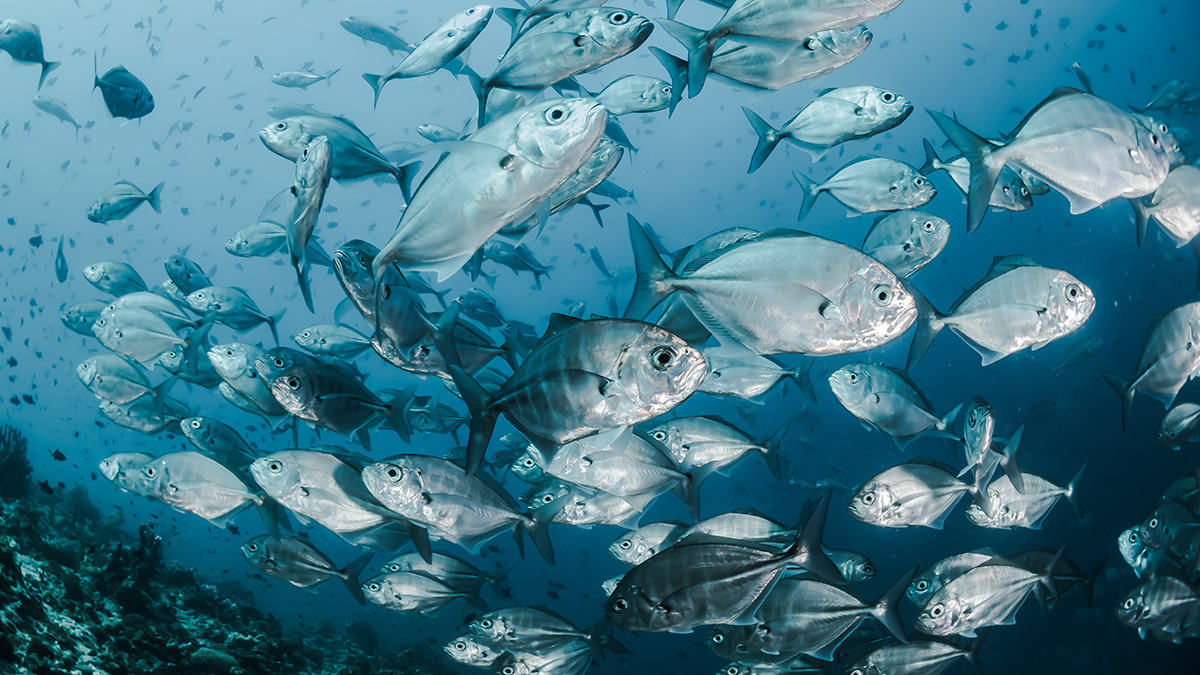About 55 million years ago, Earth’s climate underwent a rapid and intense period of warming, both on land and at sea. Temperatures soared more than 5°C, and even Arctic seas turned tropical. Reconstructing this warm era, the Paleocene-Eocene Thermal Maximum (PETM), provides a glimpse into Earth’s possible future. “One of the best tools we have to understand how the [ocean] system responds is to look at past instances of global change,” said Elizabeth Sibert, a paleoceanographer and paleoecologist at the Yale Institute for Biospheric Studies.
By examining fossil evidence from the PETM preserved in marine sediment cores, Sibert and her colleagues sought to understand how fish might respond to warming oceans. Contrary to the predictions of many models, they found that fish actually grew more abundant as temperatures soared. Sibert and her team will present their research on 14 December at AGU’s Fall Meeting 2021.
Oceans of the Past
When marine fish die, either they sink to the depths of the sea and decompose, or they are eaten by other marine life and expelled through fecal matter. In either case, corrosion-resistant teeth and shark scales settle onto the seafloor and accumulate in sediments. Layers of these sediments build up over millions of years, preserving records of fish abundance and diversity over time for scientists to decipher.
Sibert and her team examined sediment records in three different cores collected by the Ocean Drilling Program. The drill sites spanned tropical reaches of the north central Pacific, eastern equatorial Pacific, and Atlantic Oceans. The researchers filtered microscopic fish scales and teeth from varying depths of the sediment core, counting and sorting them for a window into past ocean life during the PETM.
“This is the first time we have an idea of what mid to upper trophic level groups were doing during this warming event,” said team member Richard Norris, a paleobiologist at the Scripps Institution of Oceanography. “Previously, almost all studies of the PETM have been based upon unicellular plankton or microzooplankton.”
The results paint a consistent picture of the past across all three samples: Fish became more abundant as temperatures climbed, then gradually decreased again as the warming waned. Plus, the various fish types didn’t change much during this temperature flux. “It’s really surprising,” said Norris. “You’d think that as things warm up that you might get a really different community of fishes.”
An Imperfect Proxy
These results are notably different from what current fisheries models predict as Earth currently faces another period of rapid warming. These alternate predictions could arise from a difference in timescales, the researchers note. For example, forecasting models often look at decades to a century, whereas sediment records offer glimpses of change over hundreds to thousands of years.
“There’s increasing evidence that in past warm periods in Earth’s history, biological production actually went up in the ocean.”
Despite this mismatch, “there’s increasing evidence that in past warm periods in Earth’s history, biological production actually went up in the ocean,” said Norris. Models that predict a dip in fish populations as the seas heat up may very well be accurate, but evidence suggests that will flip in the long term, he said.
Still, Sibert urges caution when comparing fish outcomes during the PETM and what might happen this century—and beyond. “The rate of warming…can have dramatic and differential impacts on marine ecosystems,” she noted.
Modern seas face a myriad of challenges beyond rising temperatures, including overfishing and pollution. Therefore, we may need to look to more recent history for an analogue for the modern ocean, says Chris Free, an ecologist at the University of California, Santa Barbara, who was not involved in the research. “To prepare coastal communities, livelihoods, and food systems for climate change, we need to have realistic expectations for likely impacts. Recent history may provide a more instructive road map for the challenges ahead,” he said.
Sibert’s research team plans to expand the study with additional sediment records from different environments beyond tropical regions to better understand whether their results represent a global phenomenon during the PETM. They will also continue to refine their research by further accounting for variation in sedimentation rates and density to increase their confidence in the results. But their preliminary findings are hopeful, at least in the long term, Sibert said: “Fish may be more resilient to global change than previously thought.”
—Elyse DeFranco (@elyse_defranco), Science Writer


